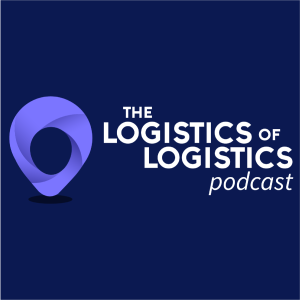

Larry Cepuran and Joe Lynch talk about Lou Gehrig Day and ALS, which stands for Amyotrophic lateral sclerosis. Larry Cepuran is a friend of Joe’s who has been diagnosed with ALS, which is sometimes referred to as Lou Gehrig’s disease. ALS has no cure and very few treatments.
Donate to ALS TDI
Lou Gehrig DayIn March 2021, Major League Baseball declared June 2 henceforth to be Lou Gehrig Day. June 2 was chosen because it is the anniversary of when Gehrig became the Yankees' starting first baseman in 1925 and when he died in 1941.
Lou Gehrig Achievements- Hit four home runs in one game on June 3, 1932.
- Won the Triple Crown in 1934 when he led the American League in batting average (.363), home runs (49) and runs batted in (165).
- Holds the record for most grand slams in a career with 23.
- Hit 493 home runs in his career, setting the record for the most home runs hit by any first baseman in history until Mark McGwire hit 500.
- Became the only player in history to drive in more than 500 runs in three years. He ushered in 174 runs in 1930, 184 in 1931 and 151 in 1932, for a total of 509.
- His amazing total of 184 RBI’s in a single season (1931) is first In American League history and second in baseball history (behind Hack Wilson’s 190 RBI’s with the Chicago Cubs).
- Set a record by playing in a consecutive streak of 2,130 professional baseball games throughout his career, despite 17 fractures in his hands, being beaned several times, having severe back pain and suffering various other illnesses and minor injuries. Gehrig’s record stood until Cal Ripken, Jr. broke it in 1995.
- Became the first athlete to have his number retired. Upon his retirement from baseball in 1939, the New York Yankees retired his No. 4 jersey. Today, the practice of retiring jerseys numbers is carried out in most sports.
- Was inducted into the Baseball Hall of Fame in 1939. In light of his progressive illness, the usual two-year waiting period after a player retires was waived in Gehrig’s case.
The ALS Therapy Development Institute (ALS TDI) is the world’s foremost drug discovery lab focused solely on ALS. As a nonprofit biotech we operate without regard to profit or politics. Led by drug development experts and people with ALS, our Cambridge, Massachusetts based lab is funded by a global network of supporters unified to end ALS. Our mission is to discover and develop effective treatments for ALS.
Donate to ALS TDI
ALS (Amyotrophic lateral sclerosis)There are currently no known effective cures or treatments to stop disease progression of ALS. ALS is a complex disease that varies from person to person and far more research is necessary to discover effective treatments for each person living with ALS.
Amyotrophic lateral sclerosis (ALS), also known as motor neuron disease or Lou Gehrig’s disease, is a disease that causes the death of neurons controlling voluntary muscles. Some also use the term motor neuron disease for a group of conditions of which ALS is the most common. ALS is characterized by stiff muscles, muscle twitching, and gradually worsening weakness due to muscles decreasing in size. It may begin with weakness in the arms or legs, or with difficulty speaking or swallowing. About half of the people affected develop at least mild difficulties with thinking and behavior and most people experience pain. Most eventually lose the ability to walk, use their hands, speak, swallow, and breathe.
The cause is not known in 90% to 95% of cases, but is believed to involve both genetic and environmental factors. The remaining 5–10% of cases are inherited from a person’s parents. About half of these genetic cases are due to one of two specific genes. The underlying mechanism involves damage to both upper and lower motor neurons. The diagnosis is based on a person’s signs and symptoms, with testing done to rule out other potential causes.
Donate to ALS TDI
Learn More About Lou Gehrig DayLuckiest Man on Earth by PT Muldoon
ALS Sucks with Larry Cepuran
Donate to ALS TDI
The Logistics of Logistics Podcast- If you enjoy the podcast, please leave a positive review, subscribe, and share it with your friends and colleagues.
- The Logistics of Logistics Podcast: Google, Apple, Castbox, Spotify, Stitcher, PlayerFM, Tunein, Podbean, Owltail, Libsyn, Overcast
- Check out The Logistics of Logistics on Youtube
More Episodes
All Episodes>>Create Your Podcast In Minutes
- Full-featured podcast site
- Unlimited storage and bandwidth
- Comprehensive podcast stats
- Distribute to Apple Podcasts, Spotify, and more
- Make money with your podcast












